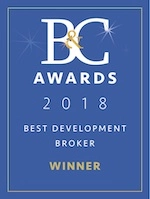May 1st, 2014.
Invoice Factoring Explained: A Comprehensive Guide

If you’ve been looking into invoice factoring but have been struggling to find a simple explanation of exactly what it is then you’re in luck. Here you will find invoice factoring explained in easy-to-understand terms, ignoring industry jargon and just telling it like it is. First things first, what is invoice factoring:
Invoice Factoring
Also known as debt factoring, invoice factoring involves a third party lending you money based on the cost of your customer’s invoices. Generally the factoring company will give you a percentage of the total cost as soon as the invoice is sent, with rest of the money available to you upon completion. Unlike financing, factoring companies will chase up your customers for you – ensuring that your bills get paid without you having to lift a finger.
Example: If customer A owes you ‘x’ then the factoring company will lend you a percentage of ‘x’ based on their invoice and will then chase up customer A for the full payment. When this debt has been collected the factoring company will provide you with the rest of ‘x’, minus their fee.
What are the benefits?
The main advantage of using invoice factoring is that your business receives a steady cash flow. This is particularly useful if you have slow paying customers or require more money throughout the month to help your business grow.
Other benefits include freeing up company time that would otherwise be wasted chasing slow-paying customers. This can also make your financial planning much easier, as you no longer have to wait on your clients to pay in order for your business to have money.
Are there disadvantages?
The disadvantages largely depend on the way in which you use factoring. While you may not be receiving 100% of your profits, you are provided with a much more efficient collection system. As well as this you are gaining a financial structure that you can plan your business around. It may cost a small percentage of your profit, but it is likely to be less than you’d lose through non-paying clients or the time wasted chasing them.
The only other issue is that some of your customers may wish to deal with you directly. If this is the case then you could set up invoice discounting, which lets you maintain the relationship through confidential borrowing against your customer’s invoices.
Finding the right Invoice Factoring lender
As with all things money related, Factoring is a very competitive industry. Every lender will offer you different rates and provide slightly different services, so it is important that you find one that’s well suited to you. The things you should be looking at include:
• Cost – this is the biggest variation, some companies will want a 1% while others ask for a 10%. You can either go and find quotes yourself, or employ a broker to look at the whole of the market and provide you with the best companies that are suited to you.
• How they deal with customers – again very important as they will be approaching your customers. How do they deal with slow payers? Are they professional and efficient? Do your research beforehand to ensure you don’t lose long-standing customers due to the factoring company.
• Specialist industries – some factoring lenders specialise in specific industries, where possible try to find a company that knows your industry inside out. This will greatly help with the way they manage your invoices.
• Size – can the invoice company meet your demands? This is one of the main reasons companies change providers, they simply out grow them and need to find a larger lender. Before saying yes to any company, see how big they go – if you’re business is growing quickly and they can’t meet the demand, then you’ll be looking again in a year or so.
For more information on invoice factoring, or a personalised quote for your business simply get in touch with Pure Commercial Finance today!





